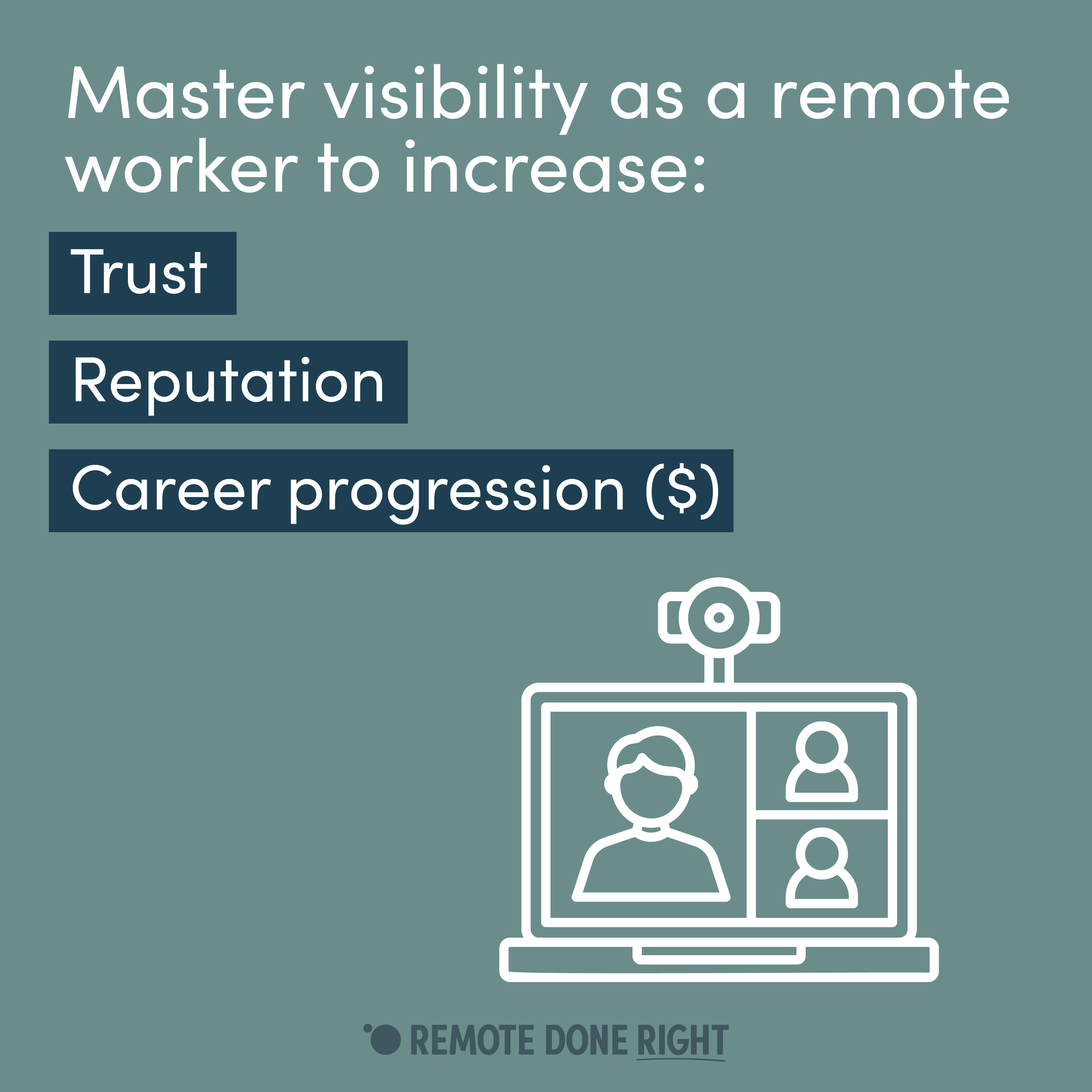Mastering visibility is key to becoming a successful remote worker.
Regardless if you’re working for an old-school leader who thinks remote working is a misguided fantasy or a new-school leader who’s into hybrid work, autonomy, and management by objectives (MBO), remote workers face an uphill journey being visible and relevant. The age-old adage of “out of sight, out of mind” remains pertinent, even with the assistance of modern technology and communications.
“Despite appreciating MBO and autonomy, remote workers [find they must] self-reinforce norms of control. They work longer and communicate more frequently to be considered “reputable employees” and to avoid career penalisation.” (Pianese et al, 2024)
Stop wondering what your team is doing and start building a remote leadership system that works. Download our free checklist to get started.
Why it matters
Maintaining your visibility enhances:
Your career progression
The perception of your performance and status as a “reputable employee”
Your trust relationship with manager and team
The perception of your contribution to team communication and collaboration
Take action
Acknowledge that remote work requires thoughtful and intentional management of your visibility. Visibility is hindered by remoteness.
Report regularly and meaningfully (focusing on objectives) to your leader and peers, in a way that best suits them.
Secure a regular one-on-one meeting with your leader, work together to keep it focused and efficient.
Leverage the technologies available (Microsoft Teams, Slack etc) to help maintain relationships.
Remember team objectives as well as your own. Support the team to meet shared objectives.
Learn more
You’re not imagining it! Studies such as Pianese et al (2024) show that additional effort is required to overcome obstacles to visibility when working remotely. And further, that reduced visibility can significantly reduce career progression, influence and trust. Proximity bias, where leaders unconsciously favour those physically closer to them, is exacerbated by remote work.
“42% of managers said they sometimes forget about remote workers when assigning tasks. This may explain why remote workers get promoted less often than their peers, despite being 15% more productive on average.” (Tsipursky, 2022)
The good news is that by taking intentional control of the remote visibility challenge, remote workers can excel equally with their office colleagues.
Join our community
Sign up to our newsletter and join our community of people committed to making remote work fair and productive.
Go deeper
Estagnasié, C. (2022). Being seen at a distance: issues of digital visibility and psychosocial risks in a pandemic context. Link
Gerstner, L. V. (2024). Remote Work Is a Leadership Killer: There’s no way of learning to manage people other than by direct observation of those who do it well. Link
Harvard Business Review. (2013). HBR Guide to Managing Up and Across. Link
Pianese, T., Errichiello, L., & Da Cunha, J. V. (2023). Organizational control in the context of remote working: A synthesis of empirical findings and a research agenda. Link
Tsipursky, G. (2022). What is Proximity Bias and How Can Managers Prevent It? Harvard Business Review. Link
Van Zoonen, W., Sivunen, A., Rice, R. E., & Treem, J. W. (2023). Organizational Information and Communication Technologies and Their Influence on Communication Visibility and Perceived Proximity. International Journal of Business Communication, 60(4), 1267-1289. Link
Williamson, S., Jogulu, U., Lundy, J., & Taylor, H. Will return-to-office mandates prevent proximity bias for employees working from home? Australian Journal of Public Administration. Link
Wisdom, J. (2023). Five Ways to Make Your One-On-One Meetings More Effective. MIT Sloan Management Review, 64(2), 1-4. Link

